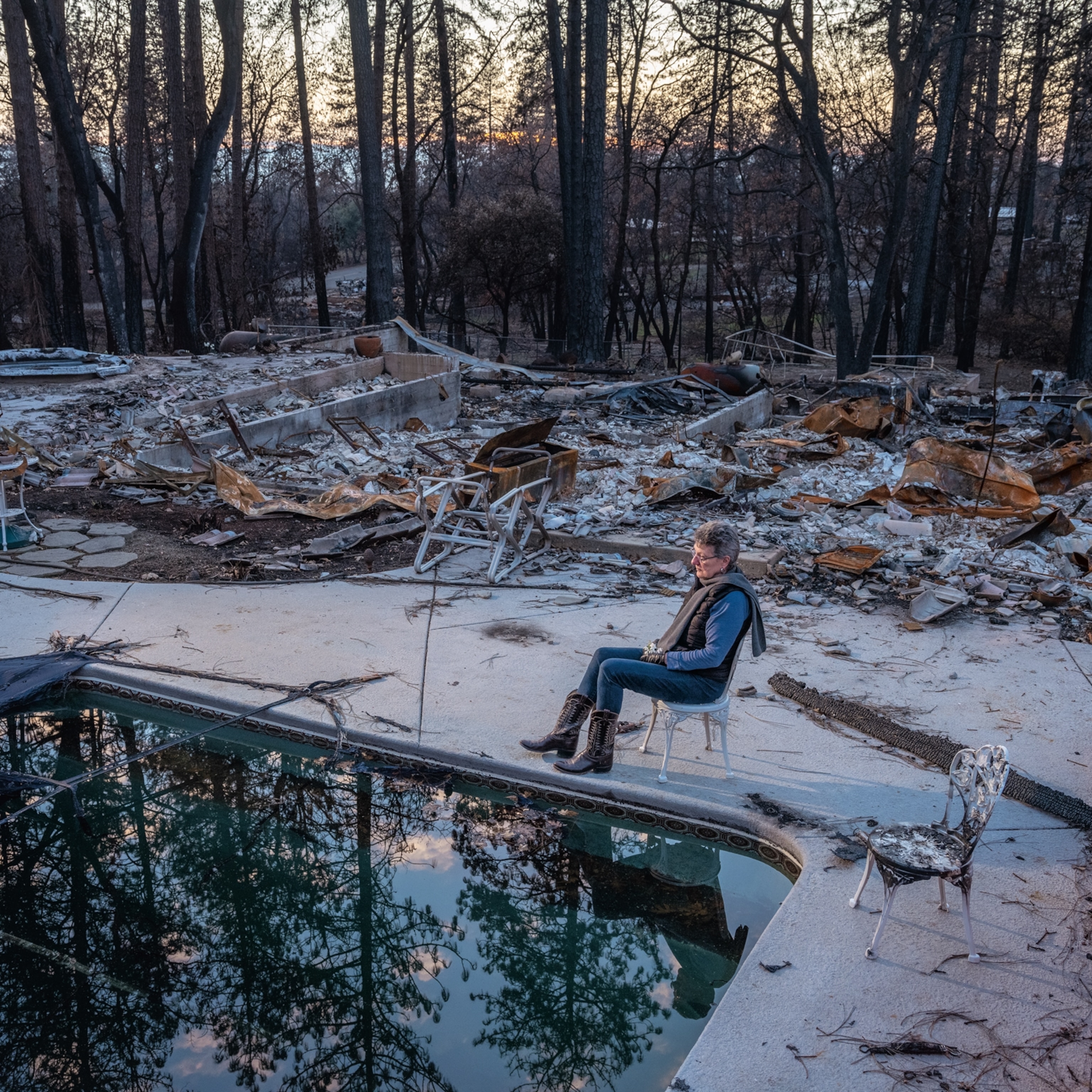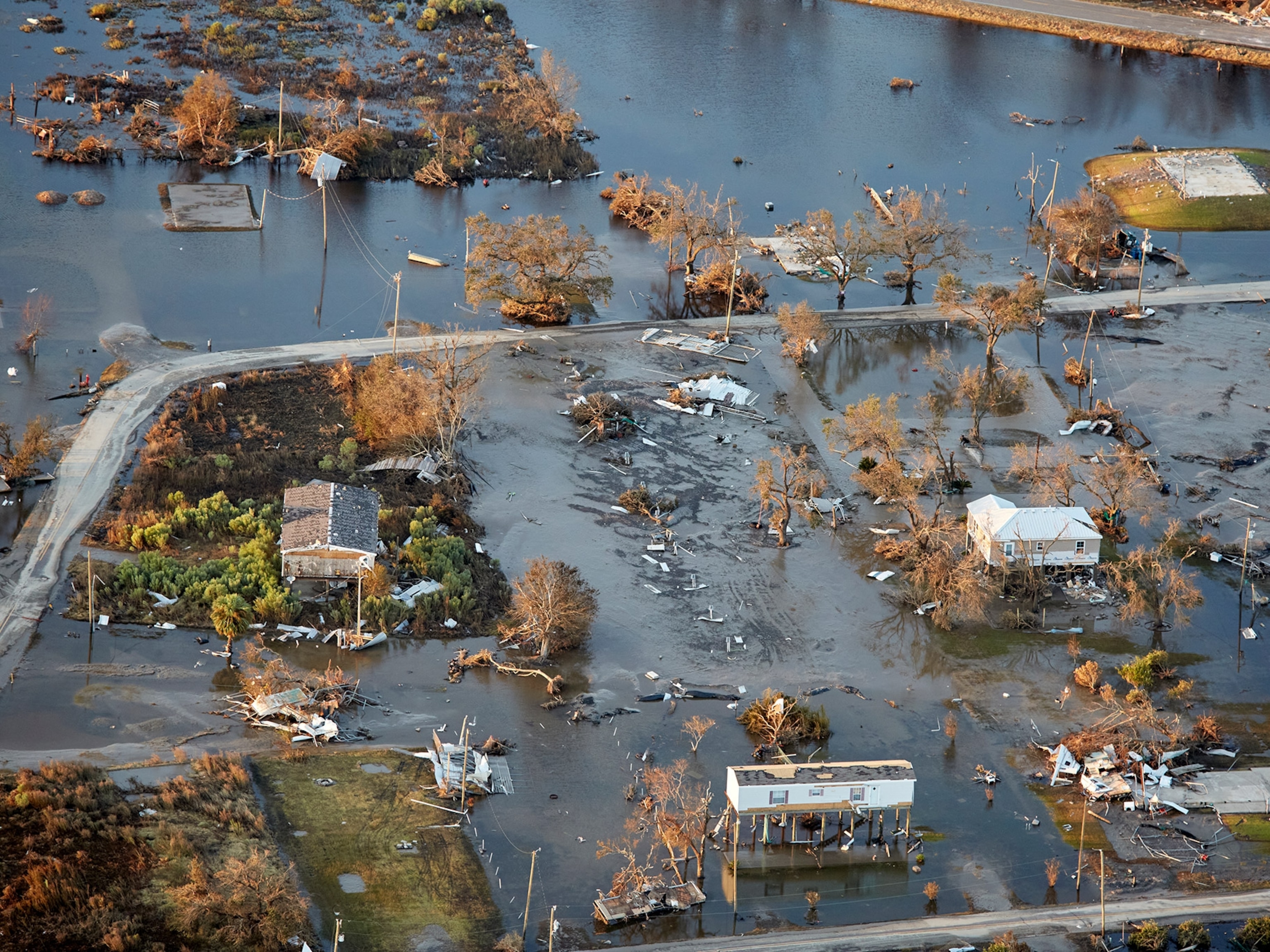
Thunderstorms are moving East with climate change
As weather dynamics shift, the eastern seaboard could get nine more thunderboomer days; other eastern states could see as many as two weeks more.
The towering clouds, the thundering claps, the sudden, torrential downpours: The dramatic summer thunderstorms of the Plains states etch themselves into the memory of anyone who experiences them.
But a new study finds that climate change is likely to affect their flavor. By the end of the century, the commonplace, intense storms that deliver 50 to 90 percent of the southern Plains states’ annual water are likely to occur a little less frequently, while more thunderstorm days both weak and strong will drench the East and Northeast.
The southern Great Plains of the United States—around Texas, Oklahoma, and New Mexico—could see an annual drop of somewhere between five and 15 fewer thunderstorm days each year. (This applies to the basic thunderstorm-rich days. Notably, the number of days with strong storms—ones with intense rain and the threat of hail, or worse—will probably remain similar). Storms in the East will increase; the number of thunderstorm days is projected to go up by about the same number. But eastern intense storms are likely to come more frequently.
“It’s a really interesting and complex response to climate change,” says Alex Haberlie, an atmospheric scientist at Northern Illinois University and the lead author of the study, published in Geophysical Research Letters.
The changes are enough to potentially impact many different quotidian experiences in the regions studied. “You may expect a thunderstorm in the afternoon at your picnic in June or July, but now we’re beginning to get them in March and May,” says Haberlie. “It’s shifting our idea of what’s typical.”
There are larger impacts as well, though: Mild, frequent thunderstorms provide an outsized percentage of annual water supply for corn, wheat, and other crops, especially during the crucial late spring and summer months. Shifting those rains—or losing even a small percentage—could have ripple effects on agriculture in the Plains states, which are a main food source for the country.
Interconnected weather
The epic thunderstorms of the Plains states—from Montana and Minnesota in the North down to New Mexico and Texas in the South—are the stuff of legend and awe for NOAA’s extreme weather expert Harold Brooks. Sky-high anvil clouds, green skies, baseball-sized hailstones: The roiling storms are so dramatic that it’s like looking at “the Grand Canyon, but in the sky,” he says.
The atmospheric explanation for why those eye-popping storms happen is also the reason they might change in the future.
Photos: Epic Lightning Storms














To build a Plains-state thunderstorm, air tens of miles up in the atmosphere comes streaming eastward off the Rockies, where it has been chilled by the altitude. The air below, near the ground, is often steamy, fed by water evaporated from the warm Gulf of Mexico and shot northward in low-level winds. The difference—warm and energetic air under cold stuff—leads to instability. Instability leads to storms.
But in years like this one, the air coming off the Rockies is warmer and drier than normal because of the record-breaking drought pulverizing the Southwest. That means less of a temperature difference between low and high air; less instability; fewer storms; and less rainfall feeding the summer wheat crop in Texas and the corn in Oklahoma.
This, says Brooks, is a glimpse of the future. “People live where the thunderstorms are because of the rainfall,” he says—a necessary ingredient in the region’s vast agricultural enterprise. But if the Southwest continues to heat up and get drier—a pattern climate scientists expect—the warm, high-elevation air it produces will keep streaming off the mountains and killing off the atmospheric imbalances that create storms over the Plains.
“It’ll just sort of boil at a low level,” says Courtney Schumacher, an atmospheric scientist at Texas A&M University. “That sticky, humid air tries to rise and turn into a storm, but it can’t.” That’s what has been happening this year in Texas and nearby regions, she says.
A stormier East, less dramatic Plains, seasonal shifts
The ingredients that make storms are fairly simple: muggy, energy-rich low-level air, colder air above, and a little kick from winds or pressure differences to mix things up.
For every one degree Celsius warmer the air, it can hold about 7 percent more moisture and therefore more energy, since water requires heat to keep it evaporated. Scientists calculate the “CAPE”—or convective available potential energy of air masses—which is essentially a measure of the energy in the atmosphere that can be turned into a storm. The higher the CAPE, the stronger the potential storm. CAPE values are already rising in many parts of the world. By 2100, if Earth has warmed roughly 2 or 4°C, the two different estimates the Northern Illinois University researchers used in their model, CAPE in the East will rise even higher, making for more violent storms.
But at the same time, their results suggest that the kind of “capping” happening this year—caused by that warm, dry, high-elevation air—could also get stronger as the Southwest heats up and aridifies more, potentially quashing many milder thunderstorms.
The team found that by 2100, the region would see somewhere between five to 15 fewer days of “40 dBz” storms—mild thunderstorms that would drench you but wouldn’t generate hail or spawn tornadoes. “The kind that if you saw coming at your picnic in July, you’d pack up and get under cover really fast,” says Haberlie.
The abbreviation “dBz” refers to the radar reflectivity of an airmass; on a radar map, 40 dBz will probably show up orange.
Interestingly, the stronger storms—the 50 or 60 dBz ones, where the chances of intense hail or tornadoes are much higher and which would show up bright red on your weather app’s radar, would likely happen about as often as they do today. That’s because at high enough energy loading, warm lower-level air can still punch through that capping layer.
In contrast, regions to the East, like the Great Lakes and the Northeast, could see more than two weeks of thunderstorm-rich days; the eastern seaboard states could get three to nine more days of storms.
As for the really intense storms—the 60 dBz ones, “the one where you have to be careful,” says Brooks—the biggest increases will hit the mid-South, which could see more than six extra days of the super-intense storms each year.
Overall, that pattern is what we should expect across a climate-changed United States, says Schumacher: “Year round, we can expect a shift from more moderate convective storms to more severe ones.”
Today, thunderstorm activity is highest in the early summer, with peaks earlier in the South and moving later in the year to the North and East. But that pattern could change: Summer storms (except for the most intense ones) become less common almost everywhere in the eastern half of the country. In the Memphis region, for example, the springtime intense storm activity could double.
Zeroing in on storms
The first glimmer of this trend—dampened storms in the Great Plains and growth to the east and northeast—came about a decade ago, when scientists were beginning to harness global climate models to look at regional-scale weather, a challenging technical problem. Global-scale climate models look at weather systems that span tens or hundreds of miles, while thunderstorms, derechos, tornados, and other storms can be only a fraction of that.
Climate scientists have gotten better and better at “downscaling” the big models or linking them up with fine-scale regional models, revealing how global climate change’s impacts will play out for even small events like hail or thunderstorms.
Using those new methods, a 2017 study pointed out the pattern: High, dry Rockies air could cut off storm formation in some parts of the Plains states, even with plenty of warm, energetic, damp air near the surface, while zones to the East would be ripe for more storms.
The new study pushes the spatial and seasonal subtlety of those projections even further, thanks to ever-increasing computing power. “This is really building the case for this change,” says Robert Jeffrey Trapp, an atmospheric scientist at the University of Illinois Urbana-Champagne. It’s not a wholesale loss, he emphasizes. “There will still be thunderstorms and tornadoes in Oklahoma in 2100. But there may be less.”
Related Topics
You May Also Like
Go Further
Animals
- This ‘saber-toothed’ salmon wasn’t quite what we thoughtThis ‘saber-toothed’ salmon wasn’t quite what we thought
- Why this rhino-zebra friendship makes perfect senseWhy this rhino-zebra friendship makes perfect sense
- When did bioluminescence evolve? It’s older than we thought.When did bioluminescence evolve? It’s older than we thought.
- Soy, skim … spider. Are any of these technically milk?Soy, skim … spider. Are any of these technically milk?
- This pristine piece of the Amazon shows nature’s resilienceThis pristine piece of the Amazon shows nature’s resilience
Environment
- This pristine piece of the Amazon shows nature’s resilienceThis pristine piece of the Amazon shows nature’s resilience
- Listen to 30 years of climate change transformed into haunting musicListen to 30 years of climate change transformed into haunting music
- This ancient society tried to stop El Niño—with child sacrificeThis ancient society tried to stop El Niño—with child sacrifice
- U.S. plans to clean its drinking water. What does that mean?U.S. plans to clean its drinking water. What does that mean?
History & Culture
- Séances at the White House? Why these first ladies turned to the occultSéances at the White House? Why these first ladies turned to the occult
- Gambling is everywhere now. When is that a problem?Gambling is everywhere now. When is that a problem?
- Beauty is pain—at least it was in 17th-century SpainBeauty is pain—at least it was in 17th-century Spain
- The real spies who inspired ‘The Ministry of Ungentlemanly Warfare’The real spies who inspired ‘The Ministry of Ungentlemanly Warfare’
- Heard of Zoroastrianism? The religion still has fervent followersHeard of Zoroastrianism? The religion still has fervent followers
Science
- Here's how astronomers found one of the rarest phenomenons in spaceHere's how astronomers found one of the rarest phenomenons in space
- Not an extrovert or introvert? There’s a word for that.Not an extrovert or introvert? There’s a word for that.
- NASA has a plan to clean up space junk—but is going green enough?NASA has a plan to clean up space junk—but is going green enough?
- Soy, skim … spider. Are any of these technically milk?Soy, skim … spider. Are any of these technically milk?
- Can aspirin help protect against colorectal cancers?Can aspirin help protect against colorectal cancers?
Travel
- What it's like to hike the Camino del Mayab in MexicoWhat it's like to hike the Camino del Mayab in Mexico
- Is this small English town Yorkshire's culinary capital?Is this small English town Yorkshire's culinary capital?
- This chef is taking Indian cuisine in a bold new directionThis chef is taking Indian cuisine in a bold new direction
- Follow in the footsteps of Robin Hood in Sherwood ForestFollow in the footsteps of Robin Hood in Sherwood Forest







